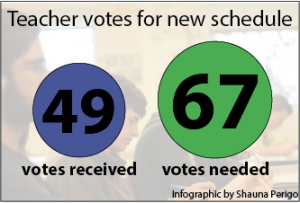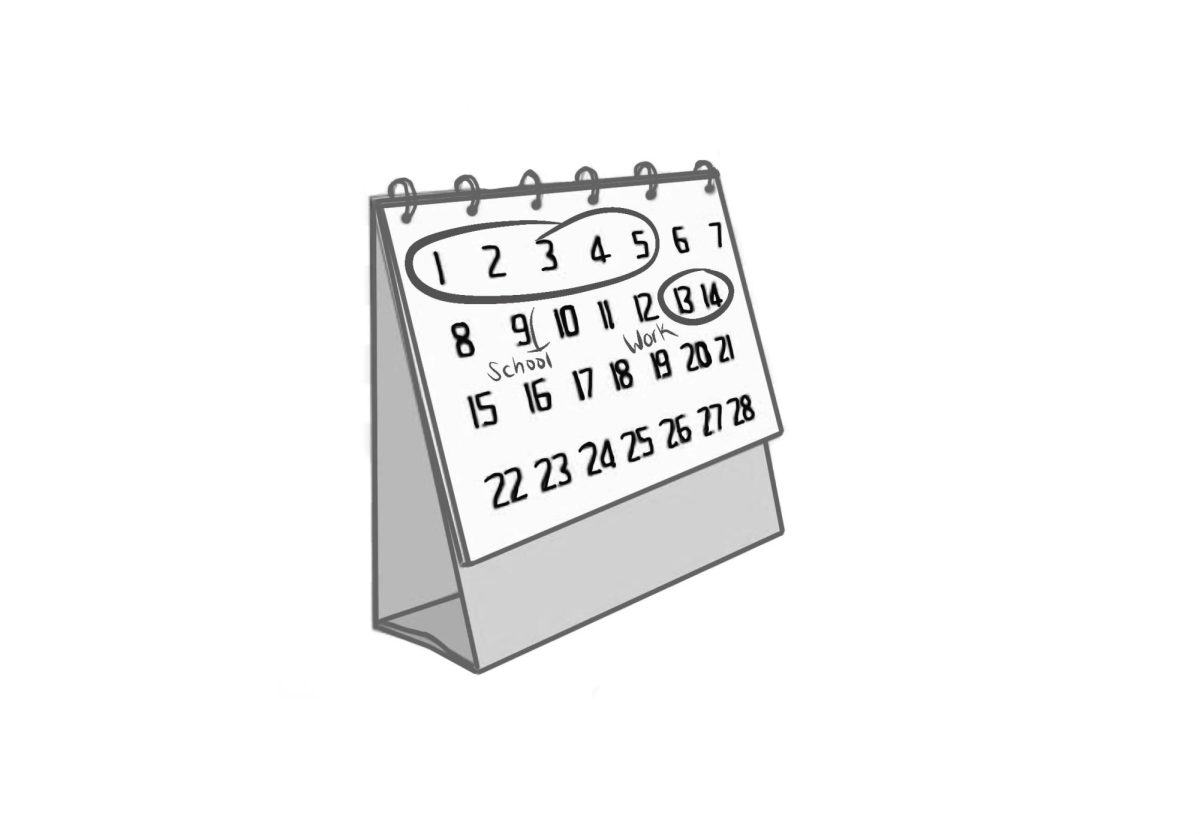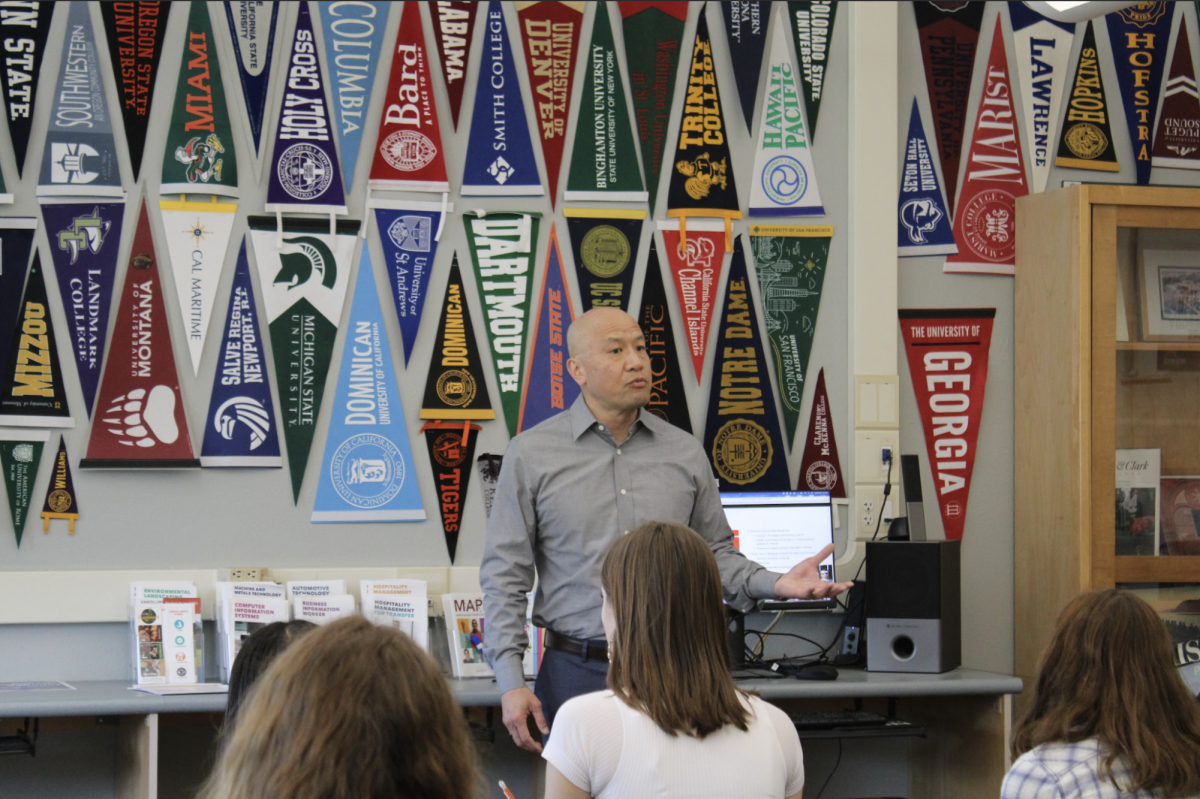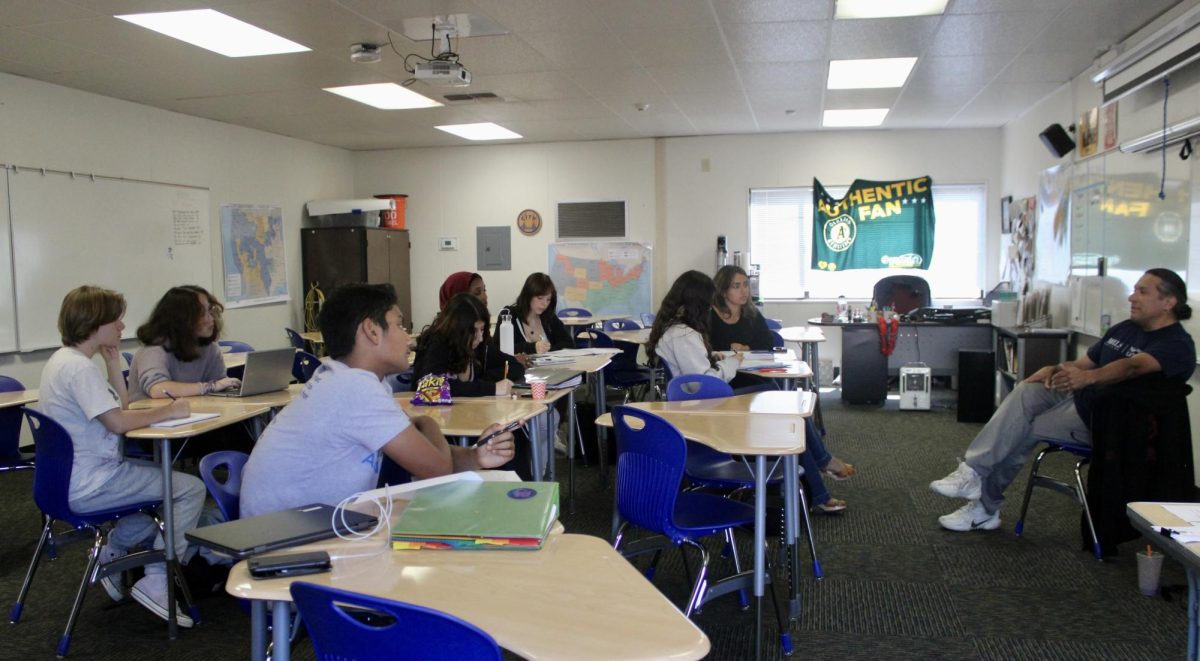
For the second time in four years, Redwood teachers have voted down a proposal to shift the weekly class schedule from the current ‘single block’ one to a ‘double-block,’ despite broad support for the measure from parents, students, and administrators.
The 52-49 vote in favor of adopting the new schedule fell short of the two-thirds majority that was required in order for the double-block to be implemented. In 2010, following a six-week trial of the new schedule, a teacher vote missed the two-thirds requirement by just one vote.
Following in the footsteps of Drake and Tam, a mix of Redwood teachers, parents, and administrators pushed for the double-block schedule to be implemented at Redwood. At Drake and Tam, the schedule provides for one seven period day (Monday) and four block days where classes are alternated between the days (Tuesday-Friday). Those TUHSD sister schools switched to a double-block schedule in the late 1990s.
Longtime science teacher Todd Samet believes that opposing teacher perspectives concerning the proposed double-block schedule typically depend on the subject matter in which the teacher specializes.
“Teachers tend to have strong opinions either way, based on personal experiences,” Samet said.
Many math teachers, for example, have opposed the proposed double-block schedule because they believe students have a hard time maintaining focus for one uninterrupted segment of 90 minutes per week, let alone two uninterrupted 90 minute (or more) periods of math per week. On the other hand, Samet believes many science teachers, for example, have often supported the double-block proposal because it allows for a more in-depth period of study.
Social studies teacher Ann Jaime shares the belief that her colleagues’ perspectives are largely impacted by the their subjects. As a social studies teacher, Jaime feels that a double-block wouldn’t seriously alter the way she teaches her classes.
In preparation for this most recent examination of the issue at Redwood, a committee comprised of Principal David Sondheim and teachers Todd Samet, Lisa Kemp, Steve Hettleman, and Erik Berkowitz was formed. The two primary goals of creating a new schedule were to provide for increased collaboration between teachers and allow for more quality time for teachers to spend with students.
Although many share Samet’s view that the proposed double-block is a “better schedule for learning,” Samet was not surprised by the results of the most recent vote.
Despite these results, members of the Redwood community remain persistent in their commitment to possibly implementing the double-block schedule in the future.
The contract between the district and the teachers’ union stipulates that the bell schedule must be taken under consideration once every three years. The most recent required vote — this year’s was called in addition to the regularly scheduled ones — was in early 2013, meaning the groups will not be required to vote again until early 2016, according to Principal David Sondheim.
The district and teachers’ union can, however, agree to call for another vote before then. Any vote would require a two-thirds majority, as dictated by the contract between the sides.

















